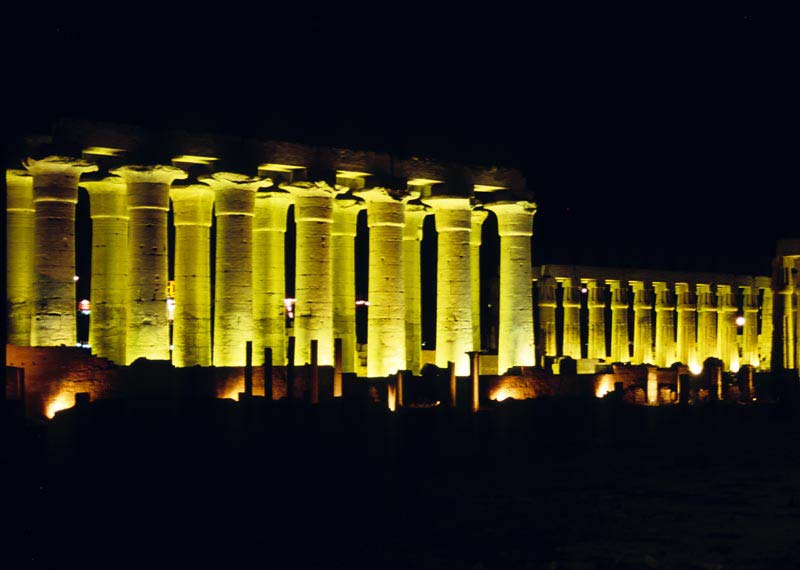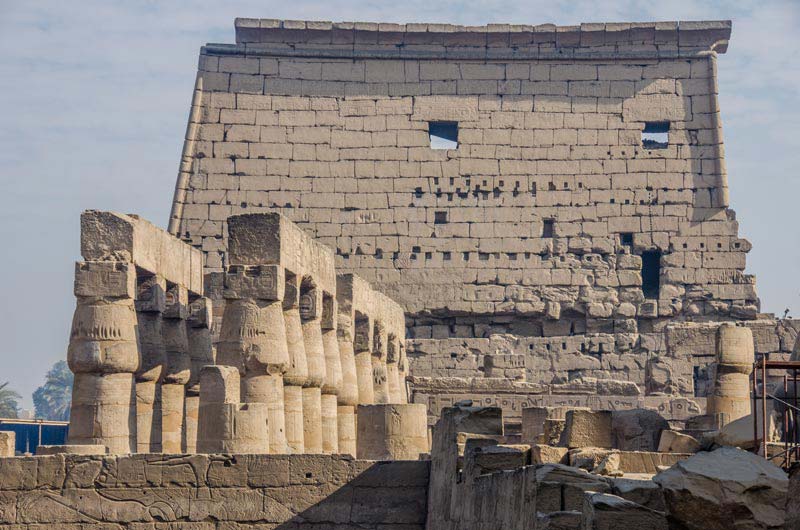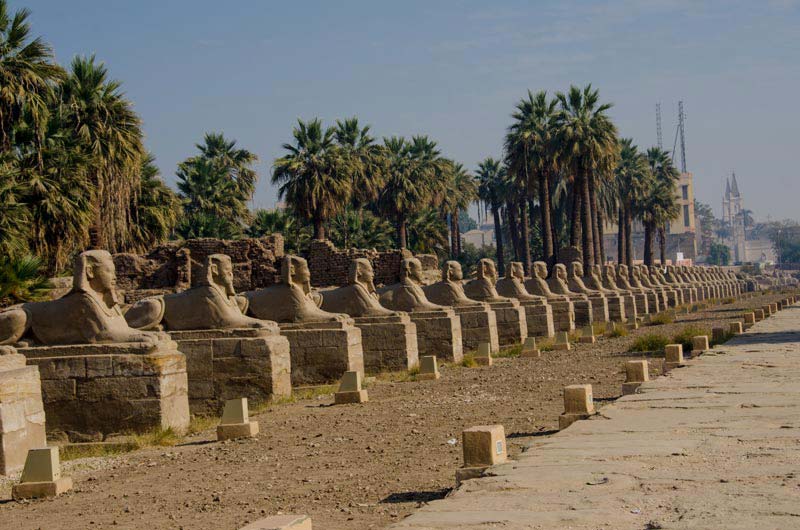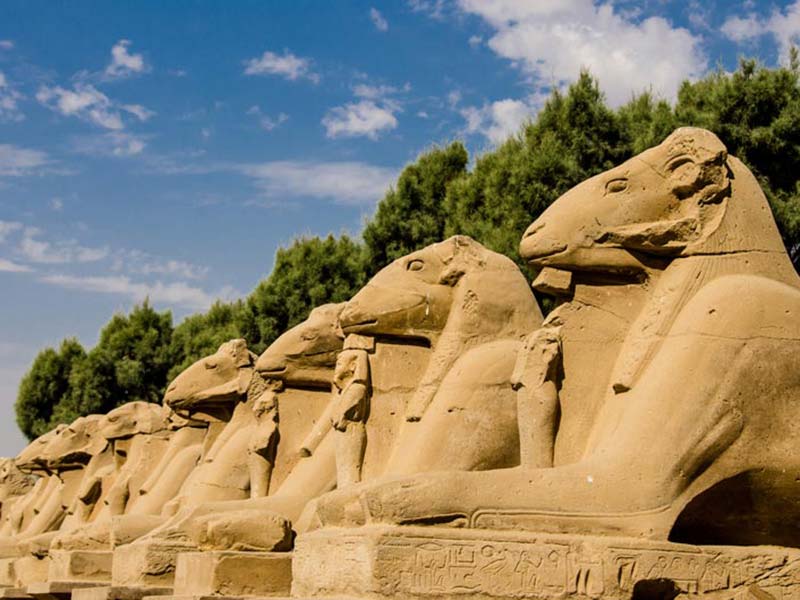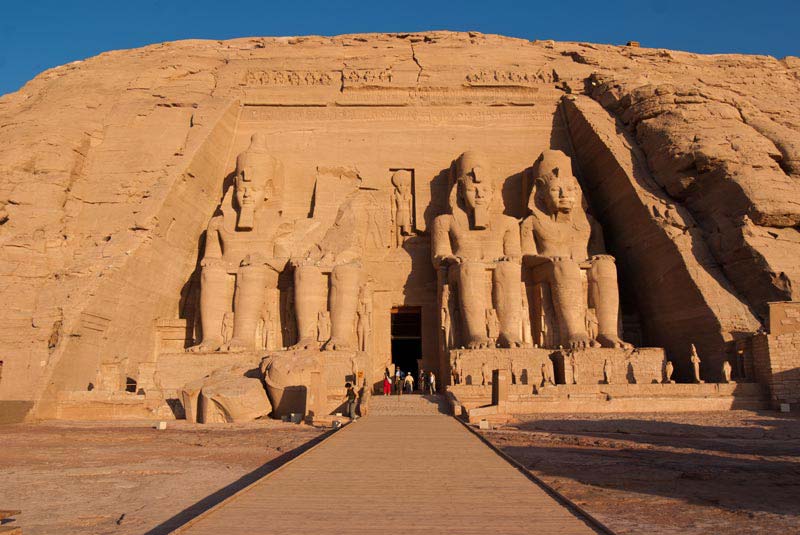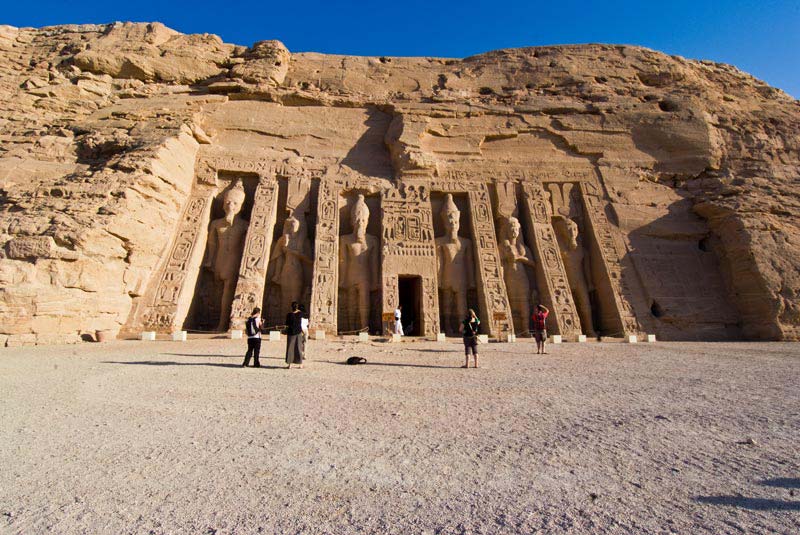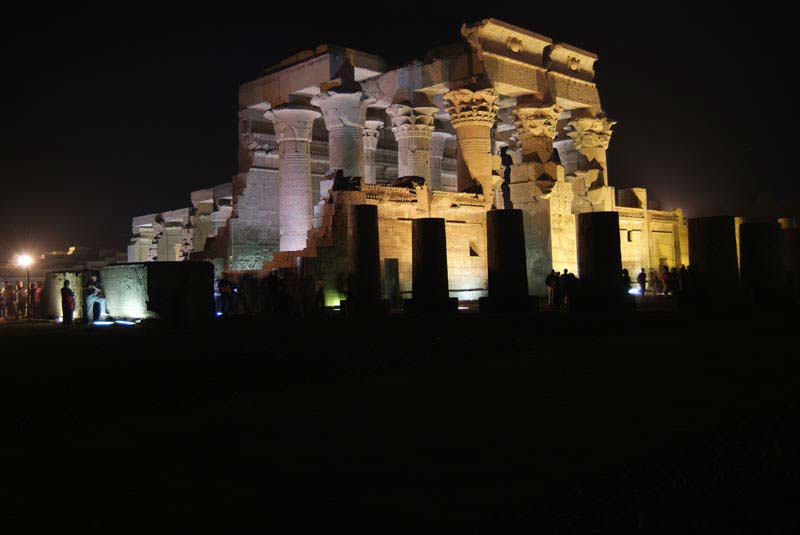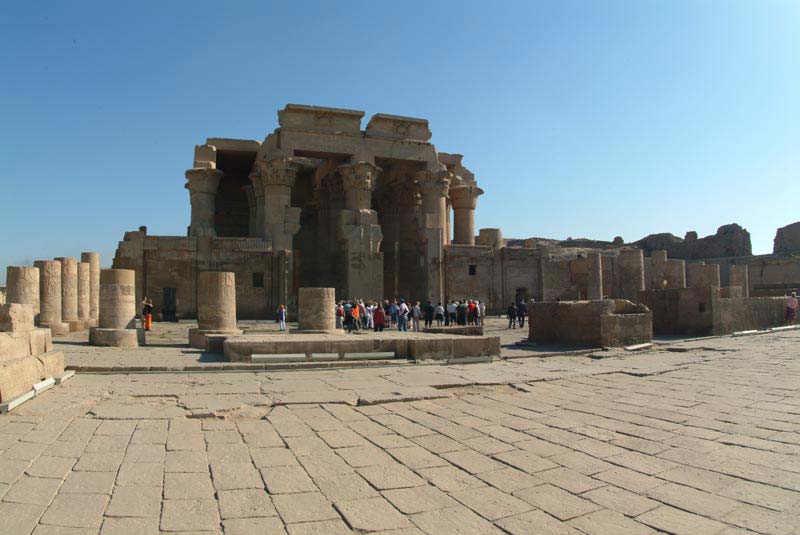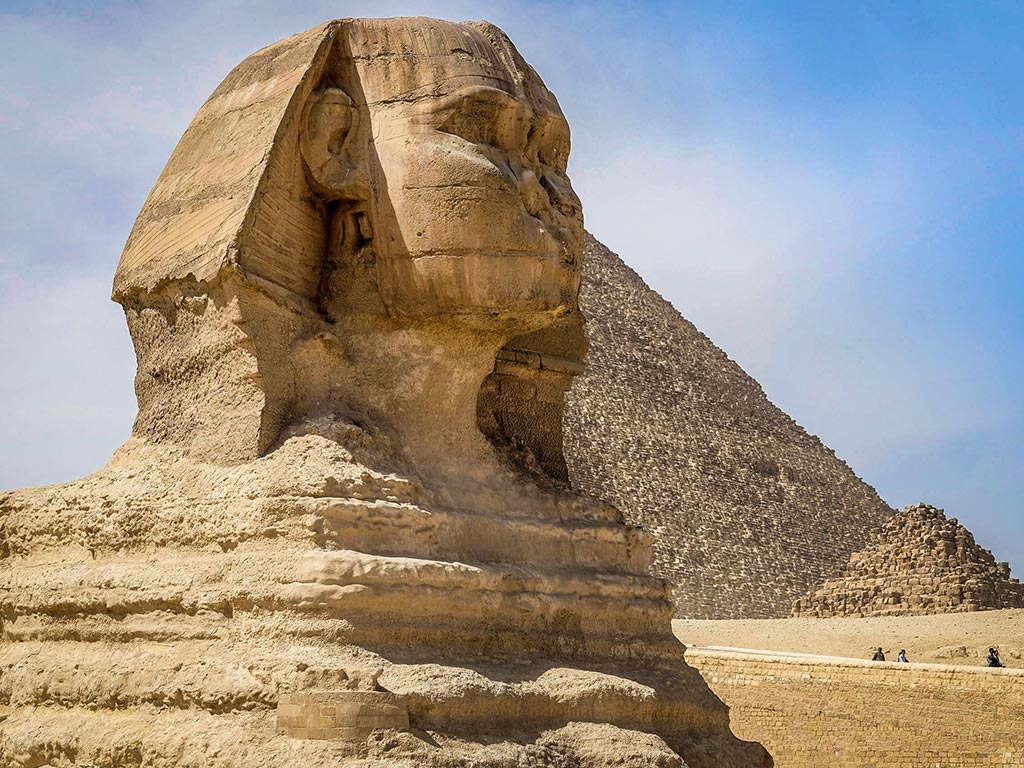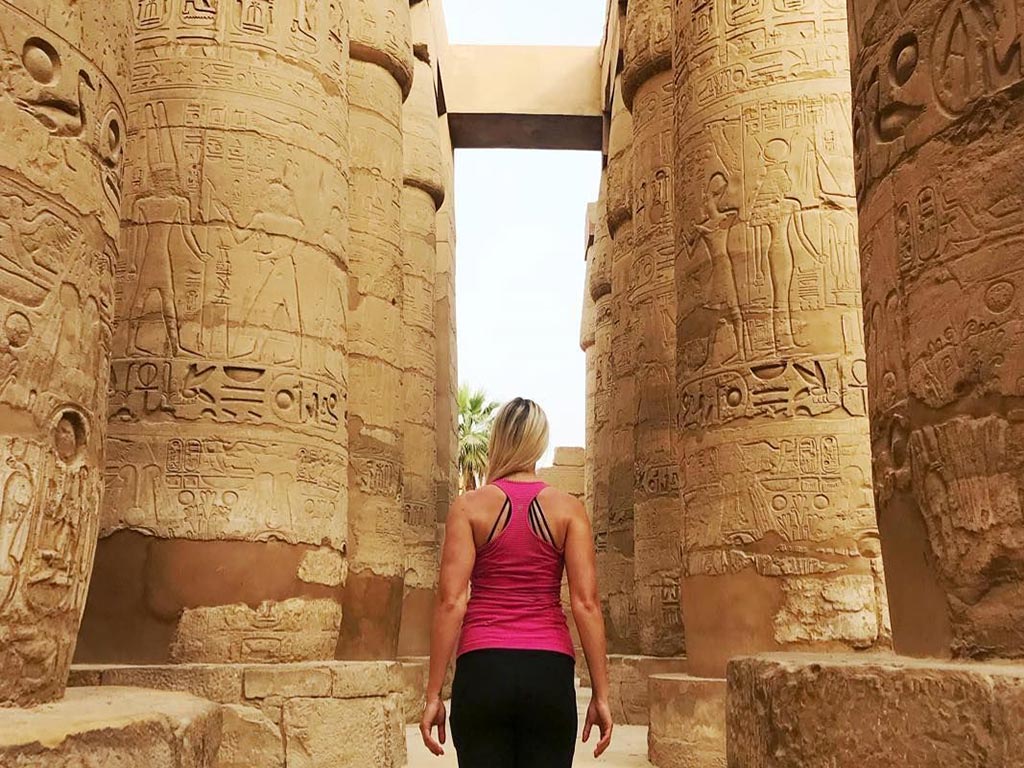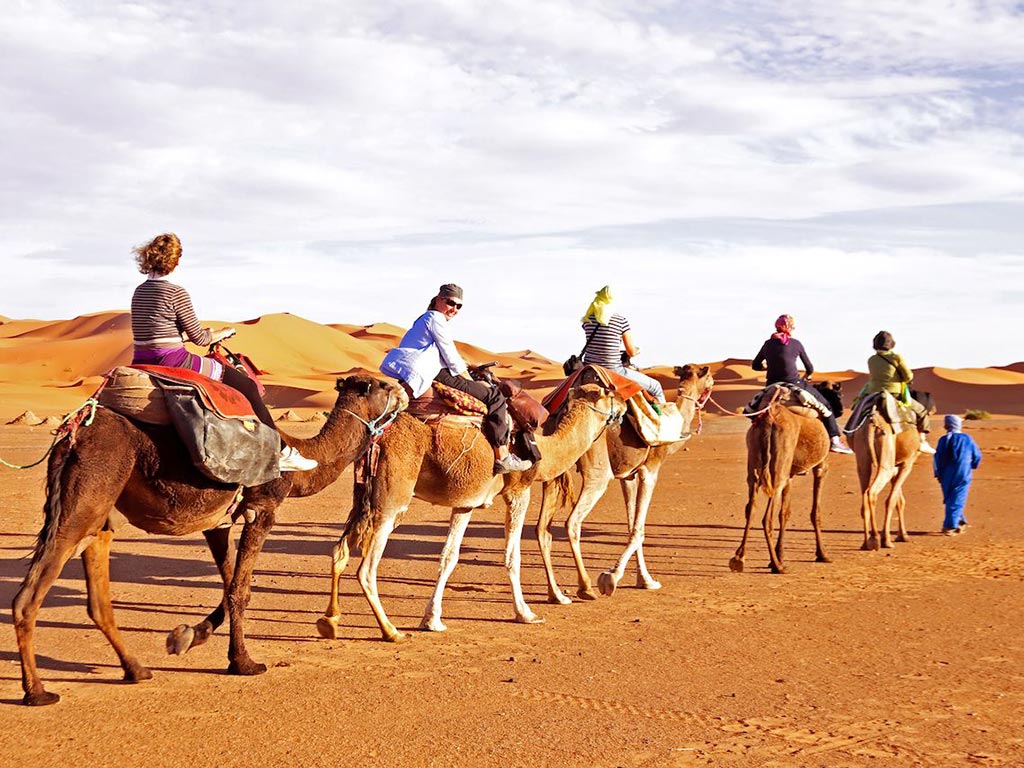An Ancient Egyptian capital, the world’s “greatest open-air museum.” Luxor is as the Phiramids of Giza – must be visited if you are in Egypt. This city is really museum by itself. The tomb of Tutankhamen in the Valley of the Kings and magnificent temple complexes of Karnak and Luxor – is the perfect choice for culture vultures. Luxor consist of two parts called East Bank and West Bank. These two parts are separated by the Nile and in ancient time s were believed to be as the symbols of Life and Death. In Ancient Egyptian mythology the setting sun to the west symbolized the journey to the afterlife, so it was fitting symbolism to bury the dead west of the Nile.Nowadays The East Bank become a modern city and The West Bank is known for its necropolis and mortuary temples.
TEMPLE OF LUXOR BUILT BY AMENOPHIS III.
Via a long stone processional street called a Dromos you can reach the Temple. The Dromos originally was lined on either side by sphinxes. In front of the LuxorT emple, the dromos is well preserved. The temple was dedicated to the Theban triad: Amun, Mut and Khons. Amun’s name means “The Hidden One.” He was a local Theban god from earliest times and by the 18th Dynasty was called the King of the Gods. His famous temple, Karnak, is the largest religious structure ever built by man. The wife of Amen was Mut in translation from Egyptian it mean “mother” and she was the mother of Khons who was the god of the moon. Since earliest historic times the Egyptians appreciated the regularity of the moon, and made it the base for their calendar of twelve months making up a lunar year.
LUXOR MUSEUM
Down the road is the oldest mosque in Luxor. It contains the remains of a 10th century Islamic saint who was a monk prior to converting to Islam. The mosque is a popular pilgrimage destination. Here also is the Franciscan Church and its schools, one for boys and the other girls. Beyond this lies a great Coptic basilica. And than you will find the Luxor Museum. All the relics are from the surrounding area and instead of that the museum is not very big it gives nice demonstration of the sense of the Luxor.
TEMPLE OF KARNAK
After Museum you will a small bridge , a little further will pass the ruins of the Temple of Mut and the road finally will get you at the domed tombs of two saints, Sidi Ahmed and Sidi Ali, where a road will lead you to Temple of Karnak entrance. This road is built along a canal where was a dock in ancient times. The great temple at the heart of Karnak is really big, St Peter’s, Milan and Notre Dame Cathedrals could be lost within its walls. The Hypostyle hall at 54,000 square feet with its 134 columns is still the largest room of any religious building in the world.
VALLEY OF THE KINGS
After this, you will take a boat trip to the West bank. This trip had a special meaning as you are crossing the way to the West and life to a necropolis. The Valley of the Kings with tombs from the 18th and 19th Dynasties. In this valley was found over 60 tombs, most of them had been robbed and this fact led to move the royal mummies to the secret tomb outside.The tomb was discovered in 1881 and the most famous in this valley is the tomb of King Tut. Outside the Valley of the Kings, the road leads past Antef, named for the 11th Dynasty princes who were buried here. Some of tombs can still be seen as one heads towards the Temple of Seti I. Most of what is left of Seti’s Temple is the view. The court is entered by the ruined gate of a pylon. The road continues south passing Dra-Abu el-Naga necropolis.
MEDINET HABU
It is another of Thebes’s major attractions. The gate has square towers and appears almost oriental. Behind the complex is the workmen’s village called Deir el-Medina. Out in the fields near here is the famous Colossi of Memnon, one of the major tourist attractions throughout time. Southwest of Deir el-Medina is the Valley of the Queens, where queens of the 18th and 19th Dynasties were buried. From here, the road continues past the mudbrick remains of Amenhotep III’s palace called Malkatta. There is a lake to the east and at the other end of that, a small Roman temple called Deir Shelwit built at the end of the 1st century.

